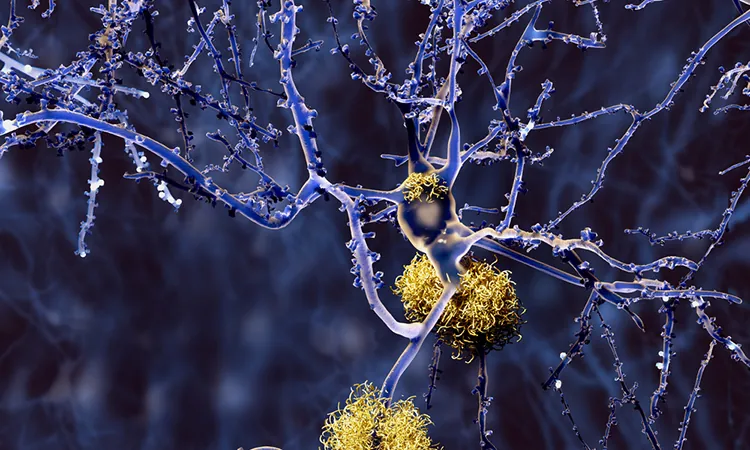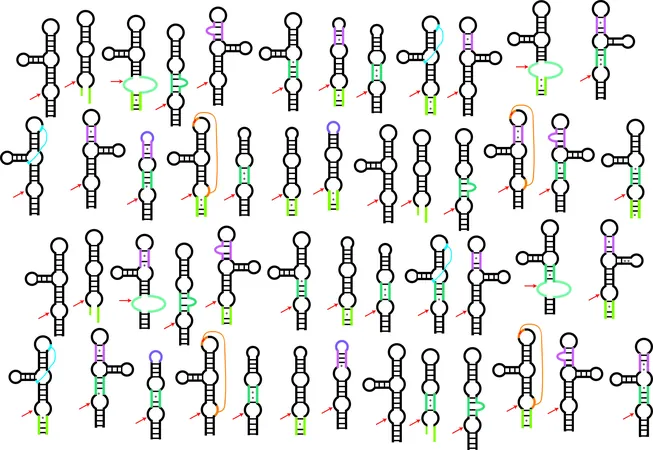
Revolutionizing Alzheimer’s Disease Management: The Power of Precision Medicine
2024-10-25
Author: Ming
In a groundbreaking Q&A session, Simon Lovestone, the Vice President and Global Head of Neuroscience Discovery and Translational Science at Johnson & Johnson, reveals how the company is harnessing the potential of the A/T/N biomarker framework to drive significant advances in Alzheimer’s disease research. With a commitment to altering the trajectory of this debilitating condition, Johnson & Johnson aims to intervene before daily life is drastically impacted by the disease.
Understanding Precision Neuroscience: A Game Changer
Precision neuroscience is reshaping the landscape of Alzheimer’s treatment by moving away from traditional diagnosis methods that rely heavily on clinical symptoms. Historically, Alzheimer's has been identified through a combination of cognitive testing, medical history reviews, and symptomatic observation. This conventional approach, while effective in some cases, often leads to misdiagnosis due to overlapping symptoms with normal aging and other neurodegenerative conditions.
Johnson & Johnson is at the forefront of utilizing innovations in precision medicine, data science, and digital health. Their mission is to facilitate earlier diagnoses and ensure that patients receive tailored treatments at optimal times. The research is concentrating on the tau protein, alongside digital and blood biomarkers, to create a more accurate and biological basis for predicting Alzheimer’s disease.
The Game-Changing A/T/N Biomarker Framework
The A/T/N framework has emerged as a vital tool in Alzheimer’s research, categorizing patients based on the presence of three key biomarkers: amyloid, tau, and neurodegeneration. By employing advanced imaging techniques, cerebrospinal fluid analysis, and blood tests to quantify these indicators, researchers can better understand the risk and progression of the disease.
Johnson & Johnson aims to leverage the A/T/N framework not just in clinical trials, but also in real-world settings. This means that as new therapies become available, the framework will help guide patients on their treatment journeys, ensuring they receive the most appropriate interventions based on their specific pathology.
Unlocking New Frontiers: The Role of Proteomics
At the heart of Johnson & Johnson's research strategy is the integration of large biofluids proteomics datasets, which may help identify biomarkers beyond the A/T/N criteria. Understanding the molecular processes that underpin Alzheimer’s, and discovering new targets for intervention, is essential as Alzheimer’s patients often display broader pathologies that might complicate treatment.
Combining hypothesis-driven research—focusing on targets like beta amyloid and phosphorylated tau—with hypothesis-free methods, including expansive proteomic analyses, fosters comprehensive discovery. Advanced technologies such as machine learning and artificial intelligence are proving to be invaluable tools in this research, promising to deepen understanding and bring hope to those affected by Alzheimer’s.
Tackling Remaining Challenges in Alzheimer’s Research
Despite the promising developments, significant hurdles remain. A comprehensive understanding of alternative biomarkers, such as alpha-synuclein and TDP-43, is necessary to paint the full picture of Alzheimer’s disease. These markers frequently co-occur with classic Alzheimer’s pathologies, and identifying them is critical for developing more effective and personalized treatment strategies.
Additionally, addressing the impact of vascular diseases and inflammation, both commonly associated with Alzheimer’s, will play a central role in future research endeavors. Understanding these interactions will help Develop new therapeutic approaches that aim to mitigate the diverse symptoms of neurodegenerative diseases.
The Future of Alzheimer’s Disease Treatment
Johnson & Johnson is committed to creating a multifaceted approach to Alzheimer’s disease treatment, moving towards a model that recognizes and treats the complexity of each patient’s condition. By advancing the field of precision medicine, they aspire to break free from one-size-fits-all solutions and instead offer customized, innovative treatment plans.
The vision is to develop an array of biomarkers and corresponding therapies that specifically target various aspects of Alzheimer’s and related neurodegenerative diseases. By doing so, they hope to alleviate the significant burden that unmet needs have placed on patients, caregivers, and families wrestling with these challenging conditions.
In a world grappling with the rising tide of Alzheimer’s disease, these advancements bring new hope for effective management and potentially transformative outcomes for patients. Stay tuned, as the field of Alzheimer’s research is poised for significant breakthroughs!


 Brasil (PT)
Brasil (PT)
 Canada (EN)
Canada (EN)
 Chile (ES)
Chile (ES)
 España (ES)
España (ES)
 France (FR)
France (FR)
 Hong Kong (EN)
Hong Kong (EN)
 Italia (IT)
Italia (IT)
 日本 (JA)
日本 (JA)
 Magyarország (HU)
Magyarország (HU)
 Norge (NO)
Norge (NO)
 Polska (PL)
Polska (PL)
 Schweiz (DE)
Schweiz (DE)
 Singapore (EN)
Singapore (EN)
 Sverige (SV)
Sverige (SV)
 Suomi (FI)
Suomi (FI)
 Türkiye (TR)
Türkiye (TR)